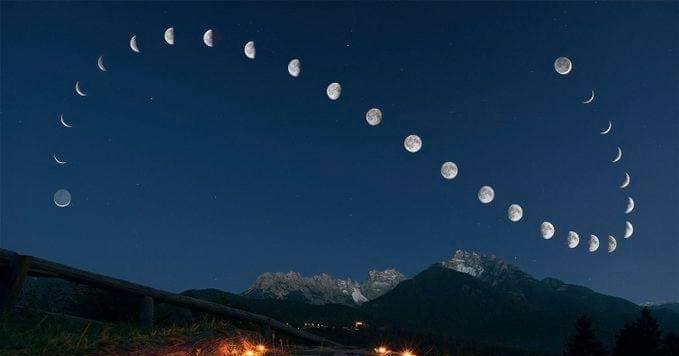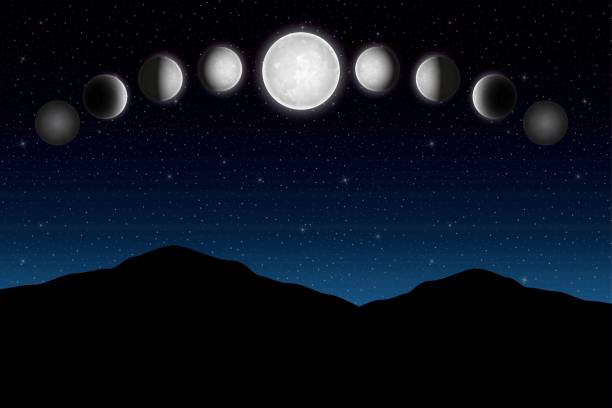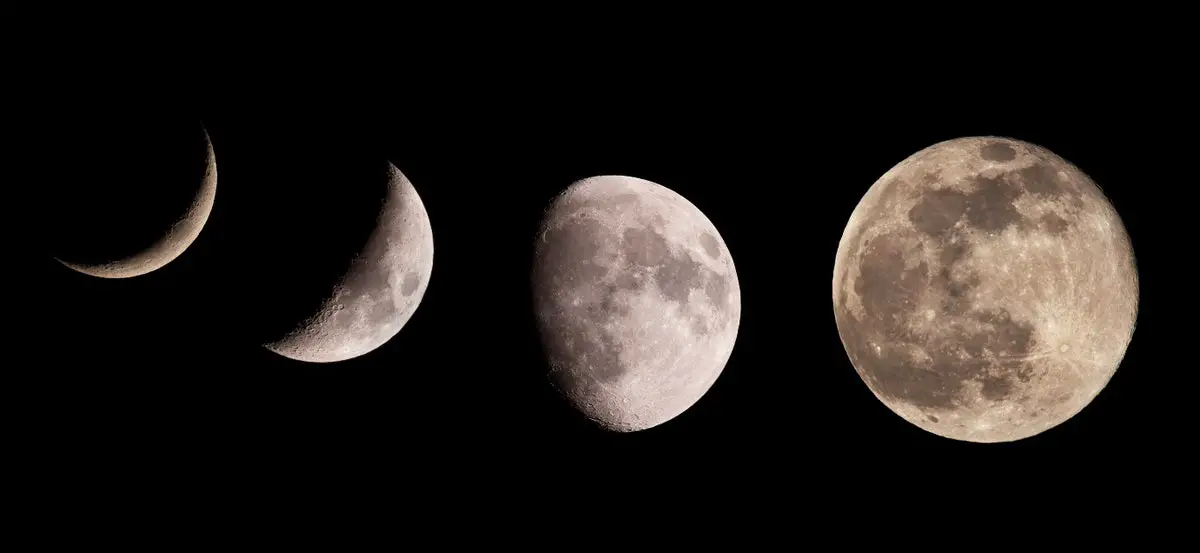Italian astrophotographer Giorgia Hofer has captivated the world with a breathtaking composite photograph that charts the Moon’s positions and phases over a full lunar cycle. By meticulously capturing images from the same location each day for 28 days, Hofer has created a mesmerizing visual chronicle of our celestial companion’s dance across the night sky. This remarkable piece of art not only demonstrates her exceptional skill but also offers a deep appreciation for the beauty and complexity of the Moon’s cycles.
1. The Artistry Behind the Lunar Composite
Giorgia Hofer’s lunar composite is a masterful blend of art and science. The project involved photographing the Moon daily, maintaining a consistent perspective to ensure accuracy. The resulting composite provides a seamless view of the Moon’s transition from one phase to another, showcasing the changing illumination and position as it orbits Earth. This visual representation elegantly illustrates the Moon’s dynamic nature and offers viewers a unique perspective on its celestial journey.

2. The Technical Process of Capturing the Moon
Hofer’s achievement is not just about the final composite but also about the meticulous process behind it:
- Daily Imaging: Each day, Hofer captured the Moon from a fixed location to ensure consistency in perspective and lighting. This required careful planning to maintain uniform exposure settings and framing.
- Image Processing: The individual photographs were then combined into a single composite using advanced photo-editing software. This step involved aligning and blending the images to create a smooth transition between the Moon’s phases.

3. Fascinating Facts About the Moon
Hofer’s lunar composite not only serves as a stunning visual piece but also educates viewers about the Moon’s phases and cycles. Here are some fascinating facts about the Moon:
- Lunar Phases: The Moon goes through eight distinct phases over a lunar cycle, including new moon, waxing crescent, first quarter, waxing gibbous, full moon, waning gibbous, last quarter, and waning crescent.
- Synodic Month: The lunar cycle, or synodic month, lasts approximately 29.5 days, which is the time it takes for the Moon to return to the same phase.
- Influence on Earth: The Moon’s gravitational pull affects Earth’s tides, and its phases have been used for centuries to track time and seasons.
4. The Significance of Astrophotography
Astrophotography, as demonstrated by Hofer’s work, bridges the gap between science and art. It allows for detailed documentation of celestial phenomena while making the beauty of the universe accessible to a wider audience. Hofer’s lunar composite exemplifies how artistic techniques can enhance our understanding and appreciation of the cosmos.
Conclusion
Giorgia Hofer’s 28-day lunar composite is a stunning example of the intersection between art and science. Through her meticulous daily photography and creative composite work, Hofer has provided a captivating view of the Moon’s phases and positions. This remarkable piece not only celebrates the beauty of our celestial neighbor but also showcases the skill and dedication of astrophotographers in capturing the wonders of the night sky.
Have you explored the art of lunar photography or created your own celestial composites? Share your experiences and insights into the fascinating world of astrophotography!




